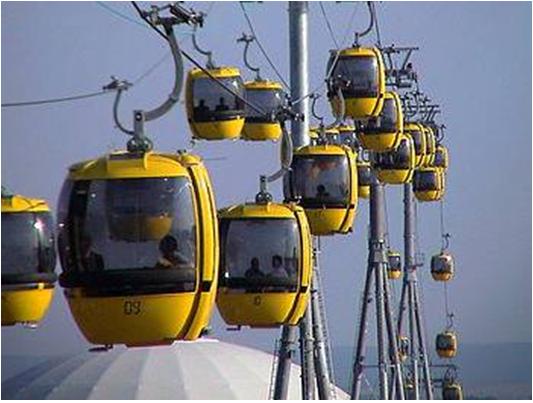During a government meeting on this year’s “Jerusalem Day” (May 28), the ministers approved a plan to build a cable car that would transport tourists from West Jerusalem to Silwan / City of David and the Western Wall area. For the first phase of the project, still without a building permit, the Ministry of Tourism has allocated around 15 million shekel to promote the cable car plan. The cable car will reinforce the site of the “City of David” in the Palestinian village of Silwan in occupied East Jerusalem as a major tourist attraction and bolster the government policy of bringing millions of tourists a year to the Western Wall and the Old City through Silwan. The cable car is part of a series of new projects that are being heavily promoted in Jerusalem’s Historic Basin.
The plan to construct a cable car route, which would link the West Jerusalem neighborhoods of Baka and Abu Tor with the Dung Gate area, was reported over two years ago. However, it only recently received official approval by the government. In order to facilitate its approval the original plan was changed and no longer includes a stop on the Mount of Olives. According to the current plan, Silwan will be the cable car’s last stop. The assumption is that, in the future, the government will try to implement the original plan and extend the cable car line so that it reaches the Mount of Olives and possibly other stations in East Jerusalem.
The station in Silwan will most likely be built in the settlers’ Kedem Compound. The cable car and the tunnel routes, which are continuously under excavation in Silwan beneath the homes of its Palestinian residents and under the Old City wall, will create a busy entry point for tourists above and below the village of Silwan.
The Director General of the Ministry of Justice, who demanded a second discussion of the plan thereby annulled the decision by the National Planning and Building Council’s appeal committee, approved the Kedem Center in the planning committees only following aggressive political intervention.
The government’s decision to build the cable car’s final station within the Kedem Center also has economic implications, i.e., partial or full government funding for the complex.
The construction of a cable car has financial implications, as well as political and cultural ramifications and will have consequences for the landscape of the historic basin and transport in the city.
According to the Israeli NGO “Emek Shave,” which works for alternative, non-politicized archaeology, “We consider the initiative by the government of Israel to build a cable car a political initiative which is intended to link the village of Silwan to the west of the city. In order to mitigate criticism and international pressure, the developers of the cable car plan have agreed (for now) to make do without the station on the Mount of Olives. For the same reason, the station to be built within the Kedem Center is being depicted as the Dung Gate station, the role of which is to facilitate access to the Western Wall for worshippers and visitors. It appears that no one has thought of the idea of creating a station, which would make the Haram a-Sharif more accessible to Muslim worshippers.”
In a position paper “Emek Shave” goes on to say: “The cable car is yet another example of a project presented to the public as a tourism venture, but in fact its main raison d’être is political: strengthening Israeli hold over East Jerusalem. The construction of the cable car, alongside the excavation of tunnels in the Old City and in Silwan and the construction of the Kedem Center, will create a new reality in Jerusalem. The visitors and the Israeli and Palestinian residents will find themselves in a very different Old City. It will be an Old City, which is Israeli and Jewish from both a physical perspective and in terms of the city’s national and political identity. It will become a city where, whether from a birds eye view or from within an underground tunnel, it will be easy to forget that Palestinians actually live here and, therefore, that a peaceful solution for Jerusalem will necessitate some form of territorial compromise or shared sovereignty.”
Related: “Emek Shaveh” Position Paper – From the Air and Underground



